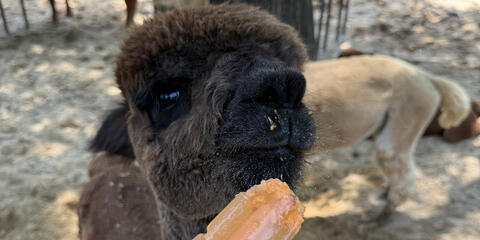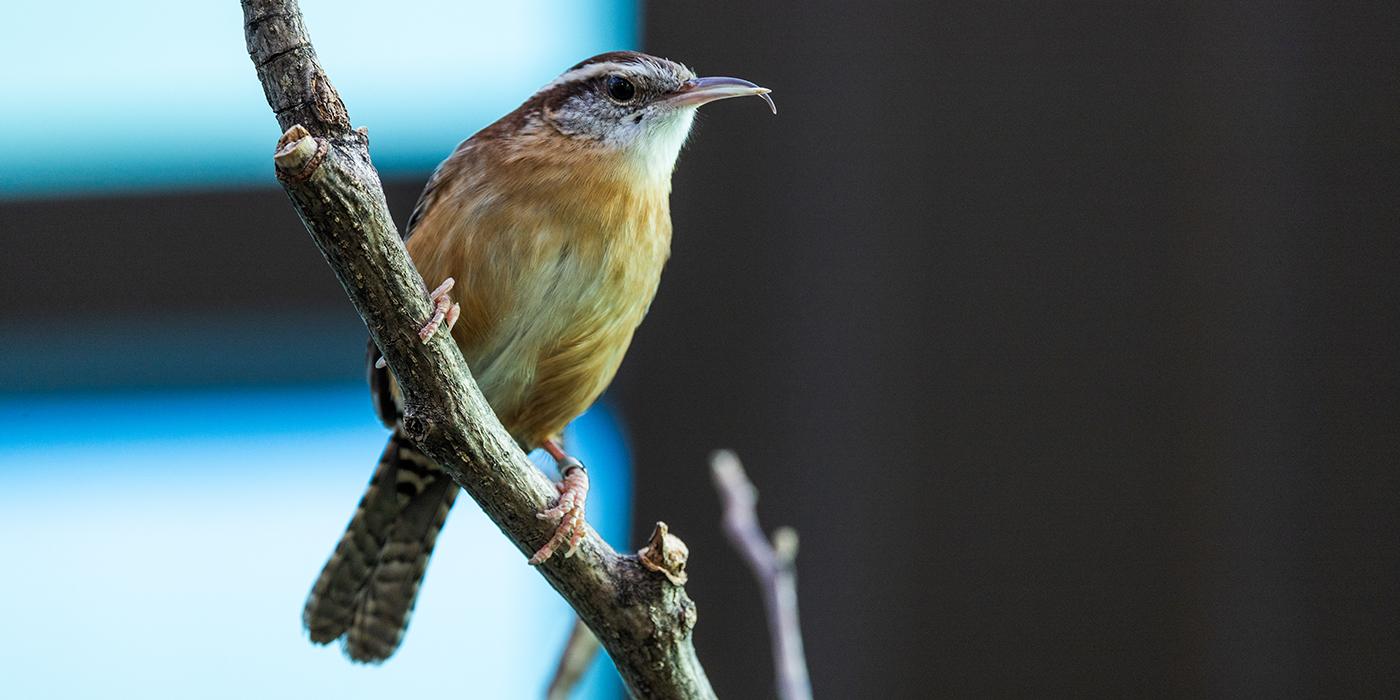If you are in the eastern United States and encounter a bird that looks like a little brown check-mark with a loud voice, it’s probably a Carolina wren. These charismatic little birds are frequent visitors to backyards and bird feeders.
Physical Description
Carolina wrens are bright chestnut or cinnamon-colored. Their throats are pale and undersides a golden tan. They have bright creamy eye bands and white steaks on their wings. Their beaks are dark, sturdy, and have a slight downward curve at the end. Their most striking feature is their long, upward-pointed chestnut tail. Males and females look very similar, although males tend to be a little bit heavier.
Size
Carolina wrens are small birds, though they are large compared to other wren species. They measure about 5 inches from tip to tail (12.5 centimeters).
Native Habitat
Carolina wrens live in a wide variety of habitats and are common in urban and suburban areas. They prefer damp areas with plenty of shrubs or brush, but also inhabit swamps, farm yards, and gardens.
Lifespan
6 years on average.
Communication
Males sing piercing, flute-like distinctive songs sometimes including the phrase “teakettle-teakettle-teakettle.” While singing, they tip their heads and beaks upward, angling their tails downward. Males can increase their song repertoire by learning new melodies, though this typically has to happen before they are three months old. Different subspecies of Carolina wrens have slightly different songs.
Food/Eating Habits
Carolina wrens are mainly insectivores that eat near or on the ground. They eat spiders, beetles, grasshoppers, crickets, stick bugs, snails, ants and bees. They will also visit backyard bird feeders, including platform and suet feeders. They especially enjoy mealworms, sunflower seeds, dried nuts, dried berries and shelled peanuts.
Sleep Habits
Carolina wrens are ctive during the daytime.
Social Structure
Fledglings tend to stick together near their parents for a few weeks or months after hatching. After that, though, Carolina wrens live alone or in pairs.
Reproduction and Development
Carolina wrens are monogamous. Breeding pairs stay together for years, until one dies or disappears. Carolina wrens mate between March and October depending on the region and work together to build a nest. Often the nest is in a cavity that can include tree knots, boxes, cans, mailboxes, vine tangles and even old shoes. Females lay three to seven eggs, though usually four. The male sings and feeds the female while she incubates the eggs. After hatching, the parents take turns feeding the nestlings crickets, grasshoppers, beetles and larvae of many insects.
Conservation Efforts
Over the past several decades Carolina wrens have probably benefited from forest fragmentation in some areas and from reforestation in others—both processes create the tangled, shrubby habitat these birds use. They have also benefited from a proliferation of backyard bird feeders.
Help this Species
- Be a smart consumer. Choose products made with sustainable ingredients, such as Smithsonian certified Bird Friendly coffees, which support farmers striving to limit their impact on wildlife and habitat.
- Be a responsible cat owner, and keep cats indoors or under restraint when outside. Never release animals that have been kept as pets into the wild.
- Avoid single-use plastics, such as plastic bottles, bags and utensils. Choosing reusable options instead can help reduce plastic pollution.
- Conservation starts with you! Join a citizen science project, such as FrogWatch or Neighborhood Nestwatch, where you can help collect valuable data for scientists. Encourage your friends and family to get involved too.
- Plant native flowers in your garden to help feed resident and migrating pollinators. You'll make your lawn beautiful and help wildlife at the same time!
Animal News

July 22, 2025
Keeping the Farm Animals Cool with Frozen Treats

July 18, 2025


